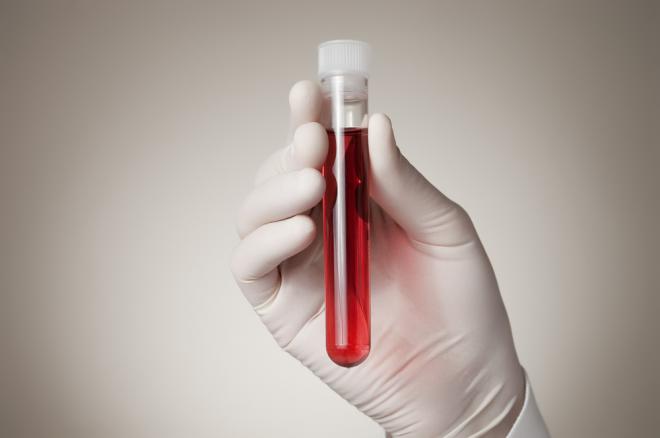Trophoblasts, cells present during development in the fetus and placenta that also circulate in a pregnant woman’s bloodstream, could potentially be used for noninvasive prenatal diagnosis, according to a paper published November 27 in The American Journal of Human Genetics.
A team led by geneticist Arthur Beaudet of Baylor College of Medicine obtained blood samples from pregnant women and separated out trophoblasts for analysis. Using whole-genome sequencing, they detected fetal genetic abnormalities such as trisomies, the presence of an extra chromosome, with high accuracy. This technique could have the potential to replace more invasive tests such as amniocentesis or chorionic villi sampling, and it appears to be more accurate than a similar procedure that tests cell-free DNA in the mother’s bloodstream.
The new paper “provides the most comprehensive demonstration to date of the potential of approaches based on circulating trophoblasts,” Benjamin Thierry, a biomedical engineer at the University of South Australia who was not involved with the research, tells The Scientist. “It makes a compelling case that the isolation of these cells from a simple maternal blood sample could replace current invasive diagnostic procedures,” he says.
Prenatal screening tests, which estimate the risk that a fetus has a disorder linked to an abnormal number of chromosomes, are done by drawing blood from a pregnant woman and analyzing DNA that is found in the bloodstream outside of cells. Some of this cell-free DNA comes from the fetus and is transferred from the placenta to the bloodstream. Fetal DNA only makes up 5–20 percent of the DNA found in a blood sample, however, which can lead to false-positive or false-negative diagnostic results if the test picks up maternal DNA instead.
This kind of screening has to be backed up with diagnostic tests such as amniocentesis or chorionic villi sampling, which can confirm whether medical conditions are present. These procedures are more invasive than a blood draw, so researchers are interested in developing a noninvasive procedure.
In the new paper, researchers collected blood samples from 95 women in Texas and New York who were between eight and 13 weeks pregnant. They separated single circulating trophoblasts from the rest of the blood through a process called magnetic-activated cell sorting, which involves using antibodies attached to magnetic beads to grab hold of the cells with the corresponding antigens. Then, they analyzed the cells by using whole-genome sequencing to detect abnormal numbers of chromosomes or variation in the copy numbers of genes.
Many of the women had been recruited for the study during an appointment for amniocentesis or chorionic villi sampling, and the results from these tests matched the findings of trophoblast analyses in cases where extra chromosomes were present, except in a few cases of placental mosaicism, which is when part of the placenta has a different genetic makeup than the fetus. The researchers were also able to confirm that 96 percent of the cells tested were trophoblasts that came from the fetus, which could make the cells a reliable tool for testing and diagnosis in the future.
“You wouldn’t need cell-free DNA, chorionic villi sampling, or amniocentesis if you could get enough cells. . . . You could get all the genetic information reliably that you’re presently getting from all of those technologies,” Ronald Wapner, an obstetrician-gynecologist at the Columbia Institute for Genomic Medicine and coauthor of the paper, tells The Scientist.
“This is a nice piece of work demonstrating the potential utility of trophoblastic cells for non-invasive prenatal diagnostic testing,” Majid Warkiani, a biomedical engineer at the University of Technology Sydney, tells The Scientist. “It’s a relatively large cohort study, which . . . employed advanced tools for rare cell isolation and analysis.”
The technology isn’t quite there yet to bring this method to the clinic, because just like fetal DNA, trophoblasts are also rare in the blood—the researchers found only 2 trophoblasts for every 10 milliliters of blood they drew. There also might be a “biological ceiling for some women that they just don’t produce as many cells for reasons we don’t quite understand,” says coauthor and Baylor Medicine geneticist Ignatia Van den Veyver.
The researchers needed to analyze each cell individually because “each cell can be at a different stage in the life cycle,” Van den Veyver tells The Scientist. Cells collected from the bloodstream “can be busy dividing and replicating DNA, or some of them can be busy dying or undergoing apoptosis,” which affects the results of genomic sequencing, she says. The researchers were able to obtain at least two usable trophoblasts from the majority of blood samples, but in other cases, results were based on the analysis of a single cell.
In addition, the cost of detecting and analyzing individual trophoblasts is high—the researchers’ procedures would be around $3,000, they estimate—but they say that as technology advances, the price could go down. “If you think about what it cost to sequence a genome or an exome 10 years ago and compare that to now, that has so dramatically gone down, and I think this is something you can see with every new technology,” says Van den Veyver.







